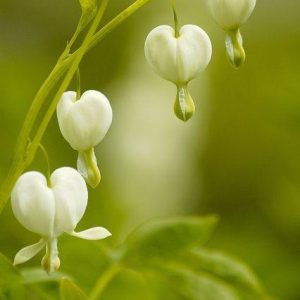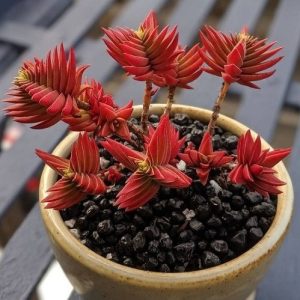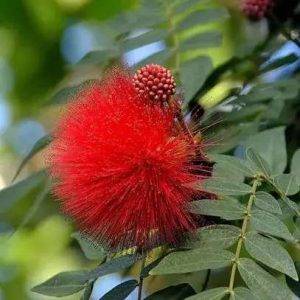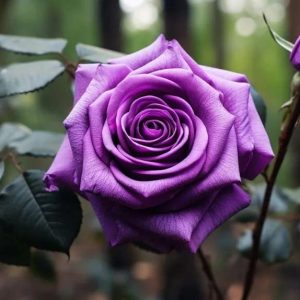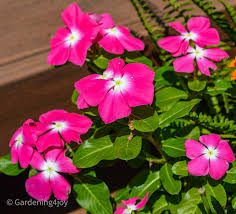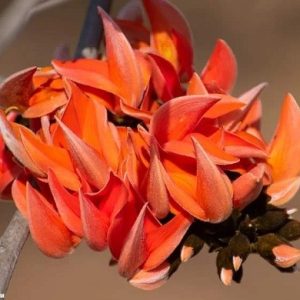As an avid succulent grower, I have done my fair share of research and in the process, come across a wide range of myths – some more frustrating than others. I think succulent plants may be the plant group with the most myths attached to them, possibly coming second only to houseplants.
So, to avoid any unnecessary succulent deaths in the future, I’m here to debunk some of the most common myths I’ve heard. Many of them have some element of truth but are often taken so far out of context that it’s impossible to tell the difference anymore.
If you’ve fallen for any of these myths, you’re certainly not alone. But now, you can be part of the movement to sort fact from fiction.

Succulents are often labeled as ‘tough’ or great for beginners with perceived black thumbs. This may be attributed to their low-maintenance needs or even their structural look, convincing millions that succulents are the things to grow because they are almost impossible to kill.
Unfortunately, anyone who has more than a little experience growing succulents will know that is completely false. It’s actually quite easy to kill succulents if you give them the incorrect care or environment. They may die relatively slowly compared to other plants as they cling to life, but that doesn’t mean they aren’t dying.
I think this reputation has duped new gardeners into giving up on plants altogether. How often have you heard someone say they don’t garden because they ‘can’t even keep a succulent alive’? Succulents are either fussed over or completely forgotten about, leading to their ultimate demise.
Don’t get me wrong – succulents are not difficult to care for. Once you understand their needs and place them in the perfect spot, they are amongst the least demanding plants you can grow. But that doesn’t mean a few common mistakes won’t kill them early.

The second myth is one that I hear the most often – succulents are great for growing indoors. This is another myth that leads new gardeners to think succulents are easy, only to find their precious plants stretched and diminished within a couple of months.
The plants we commonly keep indoors are called houseplants because they are happy to survive indoors. Houseplants usually come from the tropics and are accustomed to warmth and relatively high humidity. They also tolerate the lower light levels found indoors and are often classified as shade plants.
Besides the temperature needs, all the preferred conditions for succulents are just about the opposite of those. They prefer dry air over humidity, and most can’t handle low light at all. They might not struggle for the first few weeks, but behind the scenes, they are simply dying slowly.
If you have a dry and sunny spot with enough airflow around the plants, succulents can thrive indoors. But these conditions are rare. If you notice any stretching or weak growth, it’s almost certainly the result of inadequate indoor conditions.

Speaking of sunlight, it’s important to dispel the myth that all succulents need full sun.
Most common succulents from desert environments are used to a full day of direct sunlight. This is especially important for the structural and geometric types – like Echeverias or Haworthias – that rely on full sun conditions to maintain their compact shape.
But not all succulents come from the desert. Schlumbergera is a great example; the genus containing the popular Thanksgiving and Christmas cactus is often grown indoors. These species come from tropical jungles and need a little more sun than other houseplants, but certainly don’t need 10 hours of direct sun to grow successfully.
Most succulents will appreciate more direct light than indirect light. But as always, it’s important to check the needs of your particular species, trying to replicate their native environments as much as possible.

Succulents are perhaps most famous for their drought-tolerant nature. This is, after all, what defines the group. Succulents are plants that store additional water in their leaves to survive in times of drought, preferring to grow in dry soil with periods of infrequent rain or watering.
This limited need for water, along with frequent warnings against overwatering, has led to the myth that succulents don’t really need to be watered. Some gardeners may believe that initial watering or minimal rainfall is enough to keep these plants happy, as they are accustomed to dry, desert-like conditions.
While it is true that succulents can survive without water for a lot longer than some other garden plants, they do still need to be watered. Long periods without water can lead to stress that slows their growth and makes the plants more vulnerable to pest and disease issues.
You can allow the soil to dry out completely between watering, especially in containers, but don’t forget about them at all. If you notice shriveled leaves or stunted growth, you’ve waited too long.

Despite its ubiquity, ‘succulent’ is not a technical classification (by nomenclature standards). Instead, it is a general term used to describe plants that store water in their leaves. The word originates from the Latin sucus, meaning sap. This group covers many plant families and many different genera.
Cacti is the common term used to describe plants in the Cactaceae family. They are also known for their incredible water-storing abilities – hence their relation to succulents. But these two terms do not describe the same thing.
To put it simply, cacti are succulents, but not all succulents are cacti. The Cactaceae family is described as succulents because of their water-storing properties, but many other plants are described as succulents that are not part of the cactus group.

Because succulents are quite resilient, this no-fuss nature is often extended to the soil they grow in. Their tolerance is believed to include soil type, pushing gardeners to plant their succulents in any soil they find lying around and hoping for the best.
Succulents tolerate many things, but incorrect soil type is not one of them. They are actually quite fussy about their soil, requiring very airy and well-draining soil to replicate conditions in their native habitats.
You’ll find specialized succulent and cacti soil mix at your local nursery. These formulas are mixed with many gritty ingredients to improve drainage in the soil and allow air to flow around the roots. They won’t appreciate growing in nutrient-poor sand alone, but they do like soil with plenty of sand mixed in.
If you’re unsure about your soil type, there are a few things you can try to test if it is suitable for succulents. The easiest is to add water to the soil and watch how quickly it drains. Alternatively, you can clump the soil in your hand. If it sticks together, it is likely too dense for succulent plants.

Along the same lines as the soil argument, gardeners may also believe that succulents are tough enough to manage any climate, from snow to extreme heat. But, like all plants, the tolerances of succulents come down to the conditions in their native environments.
Some succulent species are quite cold-hardy. You’d be surprised how cold it can get in desert areas, especially in winter during nighttime. Some options are hardy down to Zone 3 or even lower (although there are very few once you drop below 3a). However, not all succulents can handle these conditions, and many detest the cold, quickly succumbing to cellular damage.
As with any plant, the key is to research and understand the specific requirements of the succulents you want to grow. Choosing the right plants for your zone (or protecting them over winter if your dream succulents fall out of your zone) will limit any accidental damage caused by sudden temperature dips.

Succulents are often grown in containers worldwide, and with this comes the recommendation of regular fertilizing. This does make sense – nutrients leach from the soils in containers much quicker with regular watering and aren’t often replaced by plants or compost, requiring gardeners to add nutrients back into the soil manually.
But it’s important to remember what soil conditions are preferred for succulents. In their native habitats, soils are not particularly nutrient dense. They do contain nutrients that allow the plant to grow and thrive (no plant can live without nutrients), but they don’t need these nutrients in large amounts.
If you adopt a regular feeding routine as you might with other container plants, you will likely burn the sensitive roots and leaves. This will quickly stunt growth, stopping any new development rather than accelerating it. Some feeding can be beneficial, but it’s important not to overdo it. An annual feeding with half-strength fertilizer is usually enough to satisfy most common succulents.

Succulents are not typically considered quick growers. They do eventually spread, with several species producing plantlets that create dense clumps of growth in containers or beds.
This slow growth is a natural characteristic of most succulent species. But some people may believe they can get around this characteristic and speed up growth by providing a larger container. Succulents usually come in quite small pots, and there is some logic to the belief that giving them a much larger space to spread will equal rapid growth and expansion.
Unfortunately, the opposite is true. Succulents prefer to be confined to their containers with tight root systems. If too much space is below the soil line, the plant will prioritize spreading roots, halting growth above the soil almost completely. This extra soil will also retain some extra moisture in areas where the roots don’t reach, possibly leading to fungal growth and the development of root rot.
If you’re repotting your succulents, choose a pot one size up or two sizes maximum, depending on what you’re growing. Your plant will grow far better this way than if you had to speed ahead to a massive container.

Pruning is a regular part of plant care both indoors and out. It helps shape plants, improve growth, and remove damaged areas that draw energy away from new growth. Despite the many benefits, succulent growers don’t often include these plants in their pruning routine.
Succulents can benefit from pruning just like other plants. It may not be required as often, but it is still an important part of care. The most vital time to prune is when you spot areas of damage or disease. Trimming will improve overall plant health and limit the spread of harmful issues that can kill your plant if not controlled.
Pruning is also useful for controlling growth. String succulents like the string of pearls are the first plants to come to mind. Mine become straggly as they hang off the sides of containers, eventually becoming too heavy to hold up long vines. A quick trim and propagation session will take the pressure off the roots and makes the plant look much healthier overall.
You won’t need to keep your shears handy constantly but don’t forget to add pruning to your succulent care checklist.

If anything is clear across these incorrect myths, it’s that succulents are not inanimate objects that can be bought and forgotten about. They need the right care like any other plant – it just so happens that that care is less onerous than what we may expect.
Your succulents may be able to survive weeks or even months without attention, but they will eventually succumb to this lack of care. Giving them the right environment and attention, and avoiding the mistakes caused by these myths, will help you grow a thriving succulent collection with very little effort.
Now that you know what’s myth versus what’s reality when it comes to growing succulents, the next steps are to make sure you provide yours the proper care they need. With a little TLC, there’s no reason your succulents won’t live long and happy lives whether grown indoors or outdoors.
